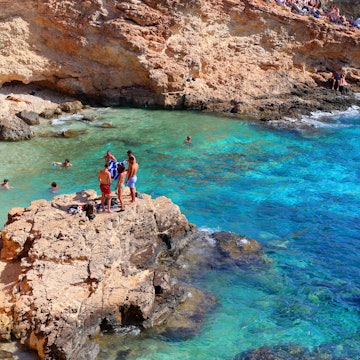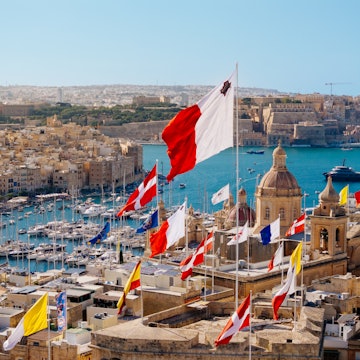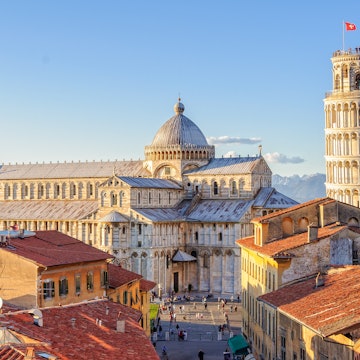

Malta’s reputation as a package-holiday beach destination tells only a fraction of the story. While the warm climate and endless seas surrounding this tiny trio of Mediterranean islands make hanging out by the water an obvious choice, there’s so much more to uncover.
Venturing beyond the resorts will reveal a gentle pace of life that has endured for thousands of years. If you’re after an antidote to hectic big-city bustle, this is the place.
Unwind in the old towns
In high summer, it can be more relaxing to stay away from the popular beaches – there are so few good strips of sand (much of the coast consists of rocky cliffs) that they become crowded. Instead, avoid the 40C-plus heat by heading inland and underground to ancient sites such as St Agatha’s Crypt & Catacombs in Rabat and the gobsmacking Hal Saflieni Hypogeum, a subterranean necropolis dating from around 3600 BC (book ahead, it’s popular).

Glorious Grand Harbour views, Valletta. Image by Kirsten Rawlings / Lonely Planet.
Don't miss Malta's old towns, especially Mdina, the ‘Silent City’; Unesco World Heritage-listed Valletta, with its Renzo Piano-redesigned city gates, Grand Harbour views and spectacularly baroque St John’s Co-Cathedral; and gorgeous Vittoriosa (also called Birgu).
And it would be criminal to overlook Gozo, another fine option for avoiding the summer crowds. This island, about a third the size of the island of Malta, has its own cultural identity and culinary traditions, and an even more laid-back pace. It also features some truly impressive sights, from the limestone arches, rock formations and inland sea of the Dwejra coastline, to the 5000-year-old Ġgantija Temples and the Il-Kastell fortress perched atop the city of Victoria.

Narrow stone alleys wind around the old citadel Il-Kastell, in Victoria, Gozo. Image by Kirsten Rawlings / Lonely Planet.
Long lunches and delectable dinners
Rabbit cooked in garlic and wine, fresh cheese, oodles of pasta, pastries – yep, Maltese cuisine is heavy on calories (and we haven’t even mentioned the cakes yet). But the way we look at it, you’ll need to carbo-load to make up for all that walking.
For the ultimate slow food experience, rent a farmhouse with a rustic kitchen and make the most of the local seasonal produce, which includes fabulously fresh fish and wonderful fruits and vegetables.
If you’re more into eating than cooking, let somebody else do the work and grab a couple of pastizzi – perhaps the most famous Maltese dish and certainly the best cheap lunch on the go. These palm-size layers of crispy pastry wrapped in an almond shape around either a ricotta or pea mixture are sold hot from hole-in-the-wall pastizzerijas in every town. Because slow food doesn’t mean you have to wait hours to enjoy it.
We said we’d get to dessert, and it’s worth waiting for. The highlights of the Maltese sweet world are mqaret, deep-fried date-stuffed pastries; kannoli, pastry tubes stuffed with sweet ricotta (cousin of Italy’s cannoli); and various baked concoctions of dark honey, aniseed and treacle flavours, either stuffed in pastry such as gagħħ tal-għasel, or in cake form.
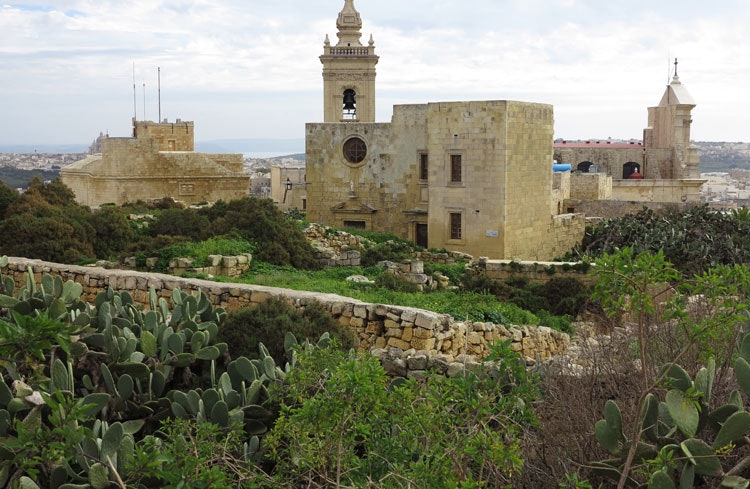
Il-Kastell sits quietly atop central Victoria, Gozo's largest city. Image by Kirsten Rawlings / Lonely Planet.
Buses, boats and your own two feet
The ultra-steep hills and year-round warm temperatures of Malta do not invite rushing. The locals know it – this is the kind of place where running for the bus is a particularly foreign activity (many drivers will patiently wait for late passengers, and if not there’s always the next bus).
Forget bullet trains and the subway or metro crush – Malta’s public transport system is composed entirely of buses (and the odd boat) and covers every corner of the two main islands. A one-day ticket for bus travel anywhere on either Malta or Gozo (you’ll have to buy two tickets if visiting both islands in one day) is €2.60 and a one-week ticket for travel on both islands is €12. Don’t expect speed, especially when winding through narrow town alleys. But who cares? It just gives you more opportunities to check out the views.
The most obvious ferry trips are the 25-minute jaunt from Malta to Gozo (€4.65 return) and the even shorter one to Comino in between (from €8 return). Water taxis are a scenic way to jump between Valletta (the capital, and Malta’s biggest town) and the nearby headlands of Sliema to the west and the Three Cities to the east. And then there’s Sicily: at just 1.5 hours away, a day trip is possible from around €60 (see virtuferries.com).
Mostly, though, walking is ideal. Malta’s compact size and millennia of human habitation mean a one- or two-hour amble will take you to at least a couple of attractions, likely in the form of ruins, coves, forts and caves. And the countryside is gorgeous: a picturesque combination of sleepy villages, with their sand-coloured houses, terraced vegetable terraces climbing up steep hillsides, crumbling cliffs and sea views.
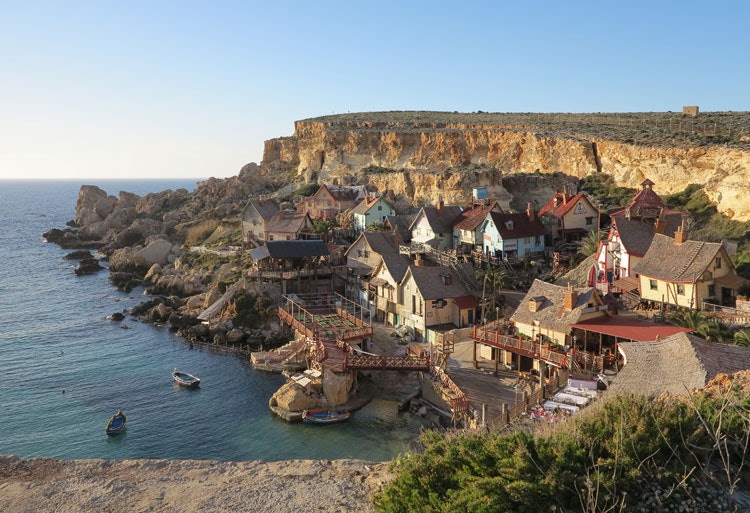
Malta has hosted many film shoots - Popeye Village preserves the set of Robert Altman's 1980 dud Popeye. Image by Kirsten Rawlings / Lonely Planet.
Staying local
It’s easy to avoid the resort areas and there’s no real reason not to, unless you’re after an English breakfast, English pub, English tourists – you get the picture.
A better option is to base yourself in a smaller sleepier town. Some top picks are Mellieħa, in the northwest of Malta, for good restaurants, beaches and a local vibe; central Malta, especially in summer, when coastal areas will be heaving; or renting a farmhouse on Gozo. The beauty of compact Malta is that, wherever you end up, you will not be far from everywhere else.
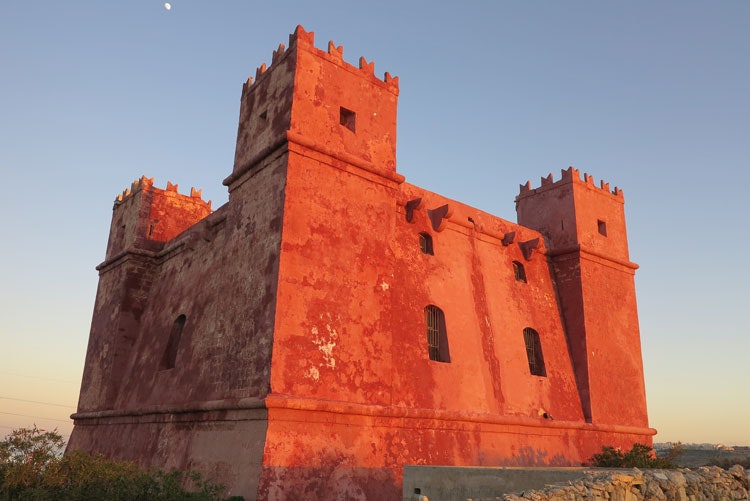
The Red Tower on the northwest coast - built in 1649 as part of a chain of signal towers. Image by Kirsten Rawlings / Lonely Planet.
Planning the trip
The Maltese islands are at their most beautiful in April, May, September and October, with the perfect combination of good sea temperatures for swimming and smaller crowds. This is the time to take in the best coastal sights such as Comino’s Blue Lagoon, with its white sand and almost fluorescent blue waters.
Don’t discount visiting in winter. From November to March, bright sunny days keep temperatures in the high teens and low 20s – ideal for those less obsessed with beach bumming. You’ll feel like you have the whole place to yourself, allowing you to experience the ultimate in slow travel.






